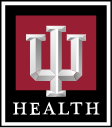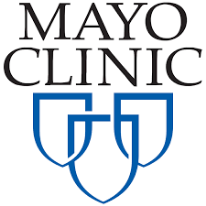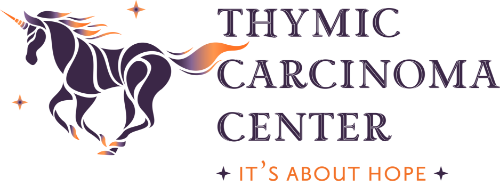Medical Research
Mission of Research:
The Thymic Carcinoma Center is dedicated to a two-pronged approach in the fight against thymic carcinoma, addressing patients’ immediate needs and the long-term goal of finding additional treatments and a cure to accomplish our mission. On one front, we are committed to providing comprehensive support to patients and their families, offering education, wellness services, and financial assistance to ensure they have the resources and hope needed to navigate their journey. Simultaneously, we are actively investing in cutting-edge medical research and funding grants that aim to innovate targeted therapies and advance our understanding of thymic cancers. This dual focus allows us to improve the quality of life for those affected today and drive the scientific breakthroughs necessary to eliminate thymic cancers in the future.
Current Research Projects Thymic Carcinoma Center is Funding

Joan & Sanford I. Weill Medical College of Cornell University
Dr. Giuseppe Giaccone
Development of New Models of Thymic Epithelial Tumors "The study of the biology of thymic epithelial tumors ("TETs") is hampered by a lack of adequate models (cell lines, mouse models). There are only a handful of cell lines available in the world which do not recapitulate the heterogeneity that is well-known in thymic epithelial tumors. TETs are classified in two main groups: thymomas and thymic carcinomas. Thymomas are further classified into type A, AB, B1, B2, and B3, according to the WHO 2015 histological classification. There are, however, many cases where multiple histological types are seen on the same sample. We and others have been trying to establish cell lines for many years, without much success. A few years ago, we established a thymic carcinoma cell line (MP57), which is now part of the tumor models available worldwide. TETs tend to survive in culture for a couple of months and then they usually stop growing and die. Organoids represent a somewhat closer model than cell lines, in that they grow as aggregates of cells that might resemble the organ of origin, and are supported by an extracellular matrix (Matrigel). Organoids have been established for a few common tumor types (e.g., colorectal, lung, bladder), and there is a whole section of the Englander Institute for Precision Medicine at Cornell that develops new organoids (5models are nowadays considered the closest tumor model to the human model because usually, the tumor that grows in the mouse maintains the characteristics of the tumor of origin. However, it takes a long time to establish PDXs and they are costly models."
Massachusetts General Hospital
Dr. Chris Nabel
Dynamic BH3 Profiling of Thymic Epithelial Tumors to Identify Novel Therapeutic Targets. There is an unmet need for improved treatment options for patients with advanced thymic epithelial tumors, which include thymic carcinoma and thymoma. Efforts at somatic mutational profiling have illuminated different patterns of molecular alterations but no targetable insights. The rarity of these tumors and limited preclinical models restrict our understanding of the underlying biology and identification of novel treatment strategies. In light of these barriers, there is a need for approaches that identify novel and effective therapies. This proposal seeks to evaluate the therapeutic implications of this model through baseline and dynamic BH3 profiling of advanced thymic epithelial tumors, including both thymic carcinoma and thymoma. The major anticipated outcome of this study is the identification of endogenous targetable apoptotic vulnerabilities within thymic epithelial tumors or novel agents that are able to induce apoptotic signaling. Both of these strategies are expected to yield novel therapeutic opportunities that will be investigated preclinically and eventually in clinical trials.
There is an unmet need for improved systemic therapies for thymic epithelial tumors, which is further confounded by an incomplete understanding of the mechanisms of tumorigenesis to inform rational treatment design. This study will address both of these critical gaps. By functionally assaying freshly biopsied patient tumors, high throughput drug screening coupled to BH3 profiling will identify novel compounds to be advanced as preclinical targets. By addressing both thymic carcinoma and advanced, B-type thymomas in parallel, this approach will permit the evaluation of shared versus exclusive drug
dependencies between tumor types and inform cohort selection for further confirmatory studies.

indiana university health
Indiana University Melvin and Bren Simon Comprehensive Cancer Center
Dr. Patrick Loehrer
Genomic Interrogation For Thymic Therapies (GIFTT) - Thymoma and thymic carcinoma are rare tumors collectively known as Thymic Epithelial Tumors (or TETs). Though rare compared to all cancer types, TETs are the most common tumors in the anterior mediastinum of the chest. These tumors are characterized by a unique pattern of spread and association with many different types of autoimmune diseases, such as myasthenia gravis, hypogammaglobulinemia, blood dyscrasias, and rheumatologic disorders. Since the early 1980s, investigators from the Indiana University Melvin and Bren Simon Comprehensive Cancer Center (IUSCCC) have led or co-led numerous studies that have established the standard of care treatment for advanced and recurrent TETs (i.e., PAC, VIP, carboplatin plus paclitaxel, pemetrexed, octreotide plus prednisone, sunitinib). Still, cures and durable complete remissions with these systemic therapies remain elusive. A major focus of our work at the IUSCCC is to advance our understanding of TET biology so we can better design novel clinical trials that impact the course of patients with thymic malignancies.
The GIFTT program seeks to develop a novel approach for the study of TETs. GIFTT builds upon the deep clinical and translational research experience at the IUSCCC and its international collaborations in thymic malignancies. Over the past several decades over 1,200 patients with TETs have been seen at the IUSCCC. The various components of the GIFTT program have been in place, starting with our leadership in TCGA project for TETs, the creation of multiple TET cell lines, development of a murine thymoma model, and strong shared resource core facilities at our NCIdesignated Comprehensive Cancer Center. Our targeted outcome is the preclinical and translational evaluation of drug candidates with the future goal of studying promising agents and combinations in clinical trials. At the core of our study is a comprehensive genomic analysis utilizing “real world” data from the Caris Life Sciences database, which includes over 400 patients to identify druggable genomic alterations and key molecular pathways of resistance. Utilizing the novel Stereo-seq platform, we intend to conduct deep sequencing of thymic tumors to better understand the complex network of interactions between the tumor and the microenvironment. This analysis will be supported by our Cancer Bioinformatics core facility and the Masood Laboratory. We will then explore FDA-approved agents known to target these genomic targets and key molecular pathways to be evaluated in the modelling phase. The GIFTT program seeks to develop a novel approach for the study of TETs. GIFTT builds upon the deep clinical and translational research experience at the IUSCCC and its international collaborations in thymic malignancies. Over the past several decades over 1,200 patients with TETs have been seen at the IUSCCC. The various components of the GIFTT program have been in place, starting with our leadership in TCGA project for TETs, the creation of multiple TET cell lines, development of a murine thymoma model, and strong shared resource core facilities at our NCIdesignated Comprehensive Cancer Center. Our targeted outcome is the preclinical and translational evaluation of drug candidates with the future goal of studying promising agents and combinations in clinical trials. At the core of our study is a comprehensive genomic analysis utilizing “real world” data from the Caris Life Sciences database, which includes over 400 patients to identify druggable genomic alterations and key molecular pathways of resistance. Utilizing the novel Stereo-seq platform, we intend to conduct deep sequencing of thymic tumors to better understand the complex network of interactions between the tumor and the microenvironment. This analysis will be supported by our Cancer Bioinformatics core facility and the Masood Laboratory. We will then explore FDA-approved agents known to target these genomic targets and key molecular pathways to be evaluated in the modeling phase. Our in-vitro and in-vivo modeling, using previously established human cell lines and newly created human cell lines and PDX models, will be led by our Preclinical Modeling and Therapeutic core facility in conjunction with the Pollok Laboratory. Based on our previously described genomic analyses, we plan to evaluate single agents and combinatorial regimens of FDAapproved medications for potential clinical efficacy. In collaboration with the Salman Laboratory, we plan to establish an organoid model to recapitulate interaction between thymic tumor cells and immune cells through novel co-culture techniques.

Mayo Clinic, Rochester, Minnesota
Dr. Aaron Mansfield and
Dr. Farhad Kosari
Development of targeting antibodies for Thymic Carcinoma. Significant opportunities remain for the development of novel antibody-based therapeutics. As of October 2022, more than one hundred antibodies have been approved by the FDA, and at least 47 of those have indications for solid tumors or hematologic malignancies. Many of these FDA-approved antibodies are redundant in that they recognize the same targets1. Given the availability of single-chain variable fragment (scFv) phage display platforms that allow for the rapid identification of scFv sequences that give antibodies their specificity, the relative consistency of antibody pharmacokinetics, the established pathways for pre-IND evaluation and regulatory review of antibodies, and the wealth of remaining cell surface targets that are differentially expressed by tumors, we can potentially impact outcomes for patients with rare malignancies through the development of new antibody-based therapies. Once an scFv sequence is identified, multiple therapeutic options are available including reformatting the scFV sequence to a specific IgG subtype, an IgG that is enhanced for antibody-dependent cellular cytotoxicity, an antibody drug conjugate or even CAR-T cell therapy (chimeric antigen receptor). Dr. Mansfield’s laboratory has created an scFv phage display library, based on the peripheral blood mononuclear cells (PBMCs) of over 1,000 patients who participated in Mayo Clinic’s Thoracic Specimen Registry. So far this year, Dr. Mansfield and his team submitted three disclosures to Mayo Clinic Ventures (Mayo Clinic’s Technology Transfer Office) based on the development of antibodies that recognize novel cell surface targets for which there are no current targeted therapies. Mayo Clinic is preparing patent applications for these discoveries as additional work continues to develop these therapies. Using The Cancer Genome Atlas (TCGA) and a transcriptomics dataset of thymic epithelial malignancies2, another group identified 409 cell surface proteins that are significantly overexpressed in cancers compared to normal adult tissues3. This group identified that the following cell surface proteins were upregulated in thymic epithelial malignancies: ADA, CD1A, CD1B, CD1E, CD3D, CDH3, CHRNA3, KREMEN2, LY6K, OR10R2, PLEK2, SLC7A3, SLCO5A1, TDGF1. Many of these proteins are related to immune cells found in the thymus and are not likely specific to malignant cells. For the remaining cell surface proteins, this group did not report whether any of these proteins were differentially upregulated in thymic carcinomas compared to thymomas. For this reason, we obtained the transcriptomics dataset from “The Integrated Genomic Landscape of Thymic Epithelial Tumors” and performed our own analysis focused on the identification of proteins upregulated specifically in thymic carcinomas2. We found that the cell surface of a specific protein was significantly upregulated in thymic carcinomas compared to normal adult tissues (Figure 2) and thymomas. This protein has been reported as a negative prognostic factor in non-small cell lung cancer, gastric cancer and colorectal cancer4-6. Using shRNA, one team demonstrated that knockdown of this protein inhibits tumor growth and migration in gastric cancer4. Although there are no therapies currently available to target this protein clinically, this study in gastric cancer provides proof of principle that targeting KREMEN2 may provide benefits for patients whose tumors express in this protein.
Available Trials Specifically For Thymic Carcinoma
MAKE A DIFFERENCE
Donate to Thymic Carcinoma
Thymic Carcinoma Center is funded entirely by donations and grants from individuals, foundations, companies, and special events. Thank you for considering a gift to our foundation. Every donation helps! Your kind donation helps Thymic Carcinoma Center provides patient assistance, education, and medical research needed to help those with Thymic Carcinoma Cancer. Thank you from all of us!!
Sign up to be the first to know about our events and for additional information about Thymic Carcinoma Center
